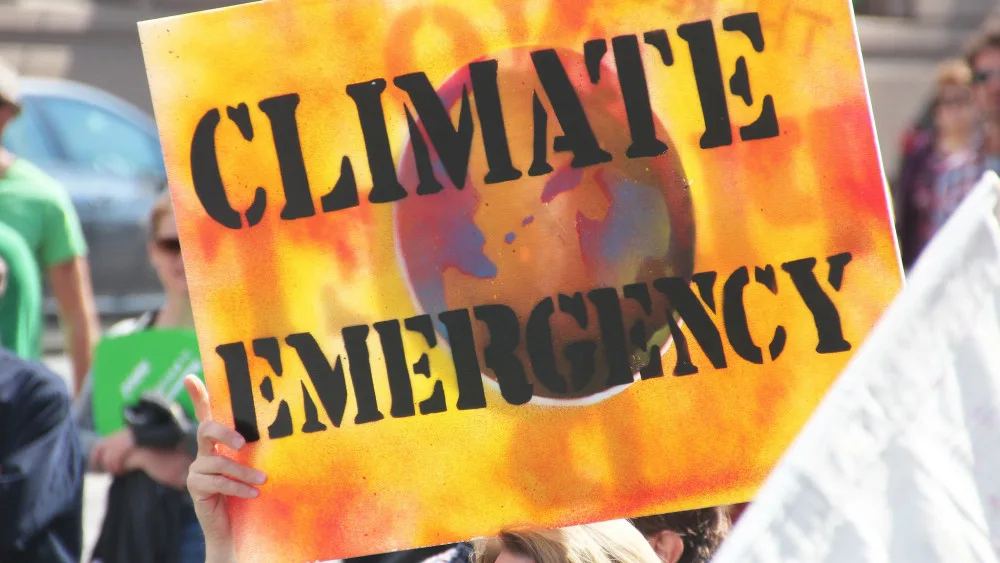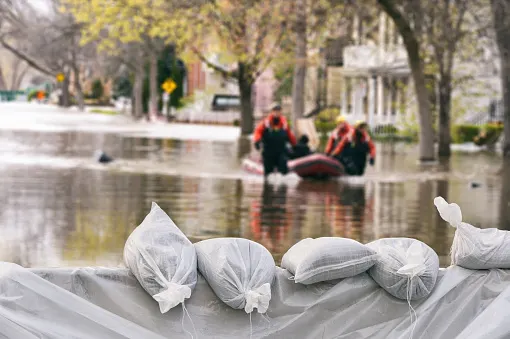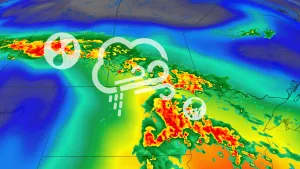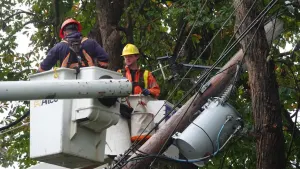
What is a Climate Emergency, and what does it mean?
With more governments making this declaration, exactly what does it mean?
Over the past year, more than 460 municipal, provincial, territorial and federal governments across Canada have declared a Climate Emergency.
The Yukon Legislative Assembly is the latest to take this important step, with a unanimous vote last week.
"Everything now should include the lens of climate change," Yukon NDP Leader Kate White said, according to Yukon News. "This is huge. This means that Yukon, by making the declaration to declare a climate emergency, it won’t be business as usual. It means that government will making decisions based on climate and climate change and crisis that we're in."
WHAT IS A STATE OF EMERGENCY?
When a government declares a State of Emergency, it carries special meaning. It gives the government a wide range of special powers to deal with the situation at hand, be it a natural disaster, an industrial accident, or due to some intentional act
The State of Emergency allows the authorities to order evacuations, restrict travel, establish emergency shelters, distribute necessary aid and the like. This is all to alleviate damage or public harm for the duration of the emergency.

Credit: Getty Images
WHAT IS A CLIMATE EMERGENCY?
What is a Climate Emergency, though? Does it carry the same weight?
Declaring a climate emergency conveys no special powers to the government, but it is more than merely a symbolic gesture.
The declaration carries with it some significant meaning, signalling the government's acknowledgement of the seriousness of the climate crisis. It also includes key promises, that:
the government will reduce greenhouse gas emissions to lessen the burden of climate change on future generations, and
that the government's resources will be invested wisely, to ensure the community remains resilient as we adapt to our warming world.
In June, the House of Commons voted to "declare that Canada is in a national climate emergency." This will require lawmakers to "make deeper reductions in line with the Agreement's objective of holding global warming below two degrees Celsius and pursuing efforts to keep global warming below 1.5 degrees Celsius."
The motion included no binding rules or specific plans to meet those goals, however.
According to the House of Commons Procedure and Practice guide, a resolution of the House "is a declaration of opinion or purpose; it does not require that any action be taken, nor is it binding."
MUNICIPALITIES TAKING STRONGER STEPS
Declarations made by municipal governments, on the other hand, have set down much more specific goals, specific plans to reach those goals, and have even involved allocating funds towards achieving these goals.
Vancouver's declaration, back in January, was followed by their approval of a Climate Emergency Response. This plan put forth several new or improved goals for the city to achieve by 2030, to promote green methods of transportation, to reduce emissions and pollution, and to restore local forests and ecosystems.
Ottawa's climate emergency declaration, in April, dedicated a sum of $250,000 towards speeding up the city's transition over to renewable energy. It will also fund a study of how it can improve its emission reduction plans. Additional efforts will likely involve improving the city's public transit system and reducing traffic congestion.
Toronto has had a climate action plan in place since 2017. Known as TransformTO, the goal of this plan was to have the city reach net-zero emissions by the year 2050, which would help keep global temperature rise this century well below 2°C.
The plan would achieve this goal by essentially changing what "business as usual" means for the City of Toronto. It would change how the city is powered. It would revise how its buildings are constructed, and it would retrofit how existing buildings operate. It would promote electric vehicles, as well as improve public transit and infrastructure. Finally, it would drastically reduce the amount of waste dumped into its landfills.
When Toronto city council unanimously voted to declare a climate emergency on October 2, they dedicated themselves to accelerating the entire TransformTO plan, wherever possible. Potentially, this includes stepping up the net-zero emission goal so that the city achieves it by 2040. That would be a full ten years ahead of the original schedule, which would be more in-line with keeping global temperature rise to below 1.5°C.
See who else has declared a Climate Emergency across Canada!
At their core, these climate emergency declarations do not come with a set of binding legal rules and regulations. There is no enforcement agency standing by to bring punitive actions against anyone who does not achieve the ambitious goals that are set down.
Instead, those that sign their names to these declarations are merely facing up to a very harsh reality. Unless we immediately begin serious and meaningful actions to curb climate change and introduce dramatic improvements to those actions over time, the impacts of climate change will quickly outstrip our ability to adapt.
By facing that reality head-on and making new commitments, these public servants are ensuring Canada does its part in the global efforts to limit climate change and also helping to ensure Canadians have a healthier and more prosperous future.
Source: Yukon News | CBC | CBC | Climate Emergency Declaration | LPC | Random Acts of Green











